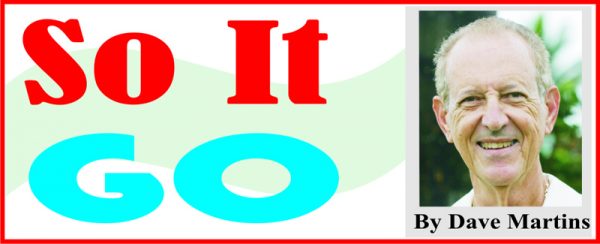
For me, one of these is the Jamaican painter Barrington Watson. I met him through a mutual friend, the late Colin Cholmondeley, a Guyanese, who was living in Kingston at the time. On trips to Guyana from Grand Cayman, I would sometimes travel via Kingston spending some time at Colin’s house and on that living-room wall there were two striking drawings by Barrington Watson. The name was new to me, but I was immediately caught by the work and wanted to buy some, so Colin hooked me up.
We went to Barrington’s house in Portmore a few miles outside Kingston up a terrible unattended road, like you’re going through wilderness, and all of a sudden, in a large clearing, there is this old estate house, two-storey, made of stone, with wooden shutters, but well kept, which is where he lived, and next to it a more modern building with glass on one side, where he worked. Lots of sketches in the studio, and lots of paintings, several big ones, in the house. He’s a very easy-going, guy, very quiet, but you can tell his antennae are out. He showed me around the studio where he had these preliminary sketches. I bought two, after looking through about a hundred. I met him another time at a house in Kingston, his mother’s I think, where he stayed when he came to town. We had a long gyaff that day, mostly about Jamaican politics, but he clearly had his finger on the West Indian pulse generally. Very solid guy; no airs. Makes you proud to be West Indian. I bought two pieces from him, drawings of a West Indian woman, simply standing proud and all woman; Barrington had several drawings like that. The two I got from him reflected the qualities of my then wife, Angela, and hung in my house in Grand Cayman for many years and are in my present home in Oleander Gardens. They are still, two of my favourite art pieces.
With Tradewinds relocated to Grand Cayman in 1980, I lived for approximately 25 years in Grand Cayman, married to Caymanian Angela Ebanks (we were blessed with three children, Annika, Janine and Bryan). In that time, I got to know some stellar Caymanians. One that stood out for me was Ormond Panton, a lawyer and political leader of the country. Mr. Ormond was a somewhat radical figure fighting avidly for Cayman ending its colony arrangement with Britain. He was enraged at Cayman’s “colonial possession” status and made independence his goal, proclaiming Caymanian abilities at every turn, and outspokenly hating the British as he went. When independence came, Ormond Panton became Cayman’s first political leader, known for his quick temper and his “Caymanian first” stand. He was almost ferocious in his position that Caymanians were quite capable of handling their own affairs and was adamant in developing Cayman’s tourism sector, aiming to attract upscale visitors from the USA and Europe. He joins the list of Caribbean patriots then in the various islands pushing their own agendas and seeking to get out from under the British mantle. Today’s Cayman success story in tourism rests largely on the efforts of Ormond Panton, and the many Caymanians who followed in his footsteps, moving the islands to the highest standard of living in the Caribbean. There is an imposing statue to him in the heart of George Town, Grand Cayman, the islands’ capital, where he was born, lived and died. The Caribbean has produced an array of imposing political figures, too numerous to list here, and Ormond Panton’s place among them is secure, if only for the almost single-minded intensity behind the cause he championed. A friendship grew up between us when I moved with Tradewinds to Grand Cayman, where our recordings had become popular, and I developed a great admiration for him. In many ways, he was often a lone wolf championing his various causes, but his devotion to Cayman never wavered. He was a formidable man.




